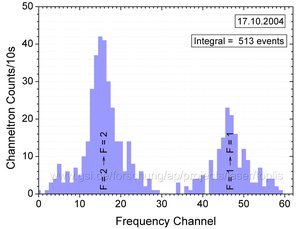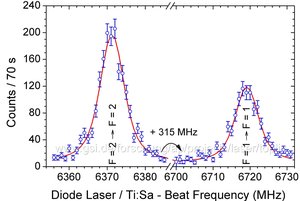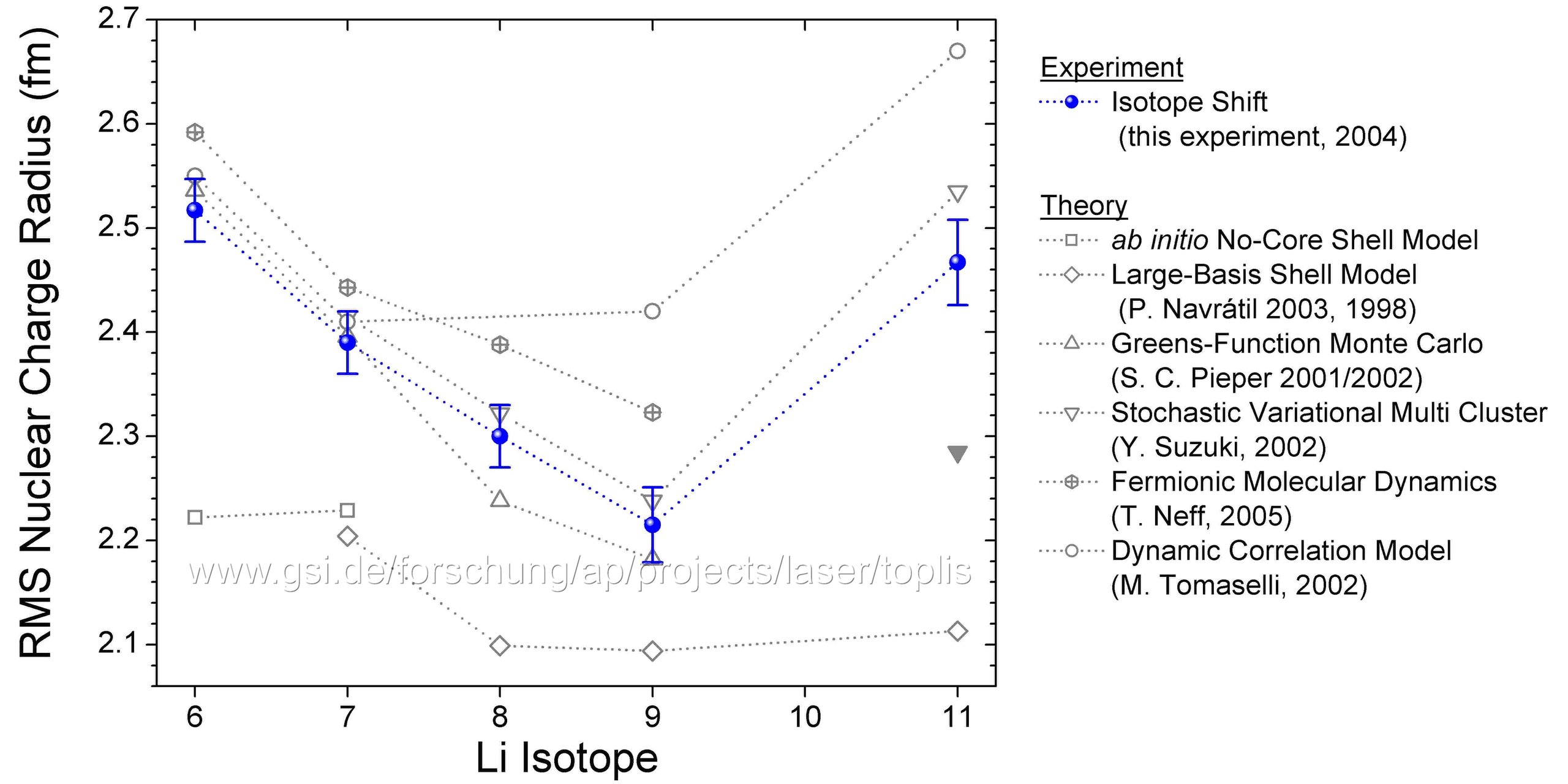The Charge Radius of 11Li
In 2004, the experimental setup, developed and tested at GSI, was moved to the ISAC mass separator at TRIUMF. This facility offered us more than 30,000 11Li ions/s, produced in spallation reactions induced by a 500 MeV proton beam with 40 μA beam current. During two weeks of beamtime in October 2004 we obtained about 100 spectra of 11Li like that shown in Fig.1. These scans were later combined to form single resonances like that one shown in Fig.2, where about 200 counts are observed in the maximum. Fits were performed (red line in Fig. 2) and then the center-of-gravity (cg) frequency was determined.
The root-mean-square nuclear charge radius was extracted by combining the measured isotope shift with theoretical mass shift calculations. The results are shown in Fig.3 where the nuclear charge radius of 7Li measured by e-scattering was used as reference. We can clearly see that the nuclear charge radius continuously decreases from 6Li to 9Li and significantly increases for 11Li. In Fig.3 also recent nuclear theoretical predictions are shown. The best agreement for the nuclear charge radius of the lithium isotopes comes from the Stochastical Variational Multicluster Model, calculations for 11Li including halo-core interactions almost agree with the experimental result (∇), while excluding possible core-excitations results in a much smaller nuclear charge radius (▼). The results are published in PRL 96 p. 033002, more datails can also be found in the PhD thesis of Rodolfo Sanchez.







